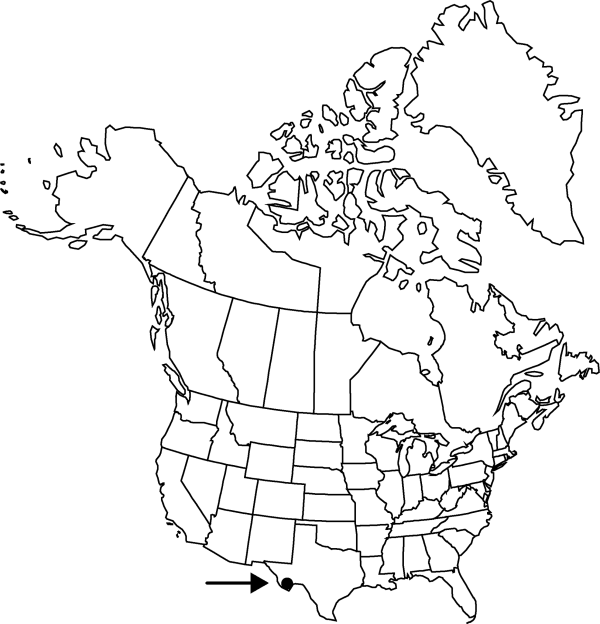Difference between revisions of "Echinomastus mariposensis"
Desert Pl. Life 17: 59, fig. s.n. (p. 60). 1945.
FNA>Volume Importer |
imported>Volume Importer |
||
| (3 intermediate revisions by 2 users not shown) | |||
| Line 8: | Line 8: | ||
}} | }} | ||
|common_names=Mariposa cactus | |common_names=Mariposa cactus | ||
| + | |special_status={{Treatment/ID/Special_status | ||
| + | |code=C | ||
| + | |label=Conservation concern | ||
| + | }} | ||
|basionyms= | |basionyms= | ||
|synonyms={{Treatment/ID/Synonym | |synonyms={{Treatment/ID/Synonym | ||
|name=Neolloydia mariposensis | |name=Neolloydia mariposensis | ||
|authority=(Hester) L. D. Benson | |authority=(Hester) L. D. Benson | ||
| + | |rank=species | ||
}} {{Treatment/ID/Synonym | }} {{Treatment/ID/Synonym | ||
|name=Sclerocactus mariposensis | |name=Sclerocactus mariposensis | ||
|authority=(Hester) N. P. Taylor | |authority=(Hester) N. P. Taylor | ||
| + | |rank=species | ||
}} | }} | ||
|hierarchy=Cactaceae;Cactaceae subfam. Cactoideae;Echinomastus;Echinomastus mariposensis | |hierarchy=Cactaceae;Cactaceae subfam. Cactoideae;Echinomastus;Echinomastus mariposensis | ||
| Line 40: | Line 46: | ||
-->{{#Taxon: | -->{{#Taxon: | ||
name=Echinomastus mariposensis | name=Echinomastus mariposensis | ||
| − | |||
|authority=Hester | |authority=Hester | ||
|rank=species | |rank=species | ||
| Line 54: | Line 59: | ||
|publication title=Desert Pl. Life | |publication title=Desert Pl. Life | ||
|publication year=1945 | |publication year=1945 | ||
| − | |special status= | + | |special status=Conservation concern |
| − | |source xml=https:// | + | |source xml=https://bitbucket.org/aafc-mbb/fna-data-curation/src/2e0870ddd59836b60bcf96646a41e87ea5a5943a/coarse_grained_fna_xml/V4/V4_366.xml |
|subfamily=Cactaceae subfam. Cactoideae | |subfamily=Cactaceae subfam. Cactoideae | ||
|genus=Echinomastus | |genus=Echinomastus | ||
Latest revision as of 22:58, 5 November 2020
Stems 3–10 × 3–6 cm; ribs usually 21 (or stems strictly tuberculate); areoles 6–12 mm apart along ribs; areolar glands absent. Spines 23–30 per areole, pale tan to grayish white, largest spines often tipped “chalky” or “dusty” blue-gray and brown; radial spines 19–26 per areole; abaxial (shortest) radial spine 3–7 × 0.1–0.25 mm; adaxial and lateral (longest) radial spines 5–11(–15) mm; central spines 4(–6) per areole, 12–21 × 0.2–0.6 mm; longest adaxial central spines erect or ascending, often slightly curved toward stem apex, abaxial central spine 5–8(–15) mm, descending or porrect and often decurved. Flowers 2.2–2.3 × 1.9–4 cm; inner tepals white with complete or partial midstripes of either dull pink or pale yellowish tan to pale green, 1–2 cm × 1.5–4 mm; stigma lobes green or yellow-green. Fruits indehiscent or disintegrating irregularly, short oblong or spheric, 10 × 8 mm. 2n = 22.
Phenology: Flowering Feb–Mar; fruiting Apr.
Habitat: Chihuahuan desert scrub and margin of Tamaulipan thorn scrub, rocky sites, barren hilltops, limestone
Elevation: 500-1300 m
Distribution

Tex., Mexico (Coahuila).
Discussion
Of conservation concern.
Echinomastus mariposensis prefers rockier sites than other species of Echinomastus in the Chihuahuan Desert. It usually inhabits limestone and is abruptly replaced by E. warnockii on gypsum and other substrates. Immature plants have only two central spines, one above the other, both 3 mm, resembling immature Coryphantha tuberculosa except for subtleties of color, thickness, and orientation of the spines.
Selected References
None.